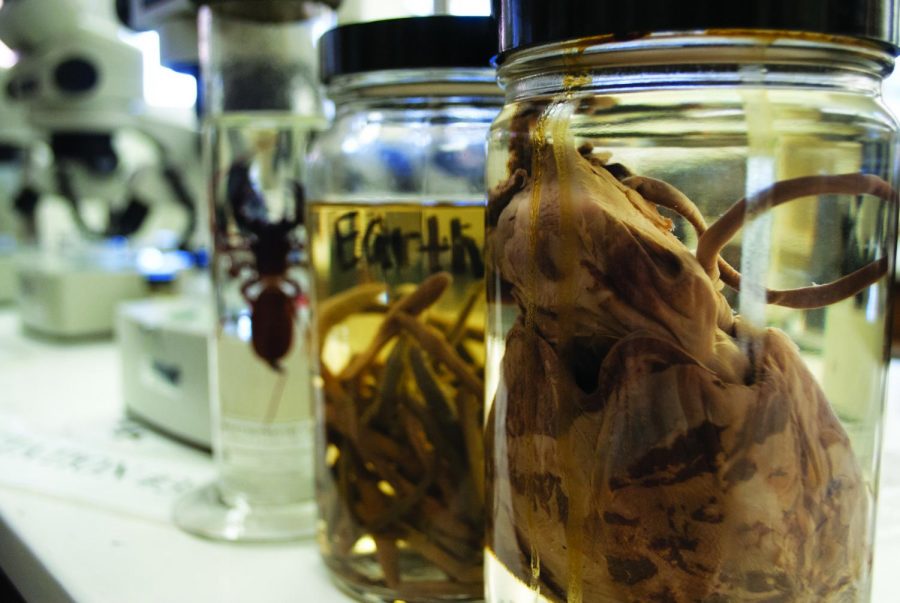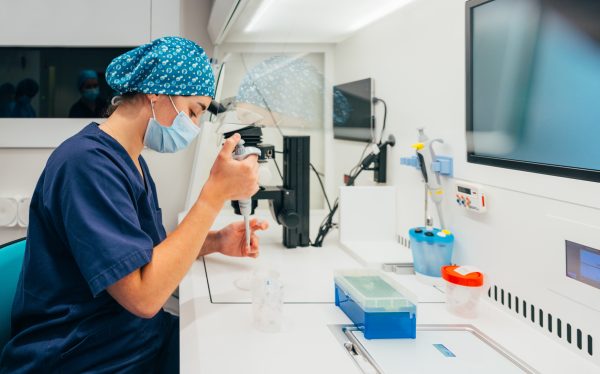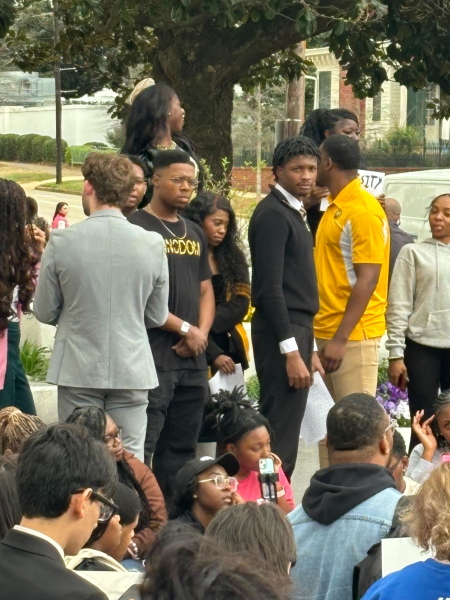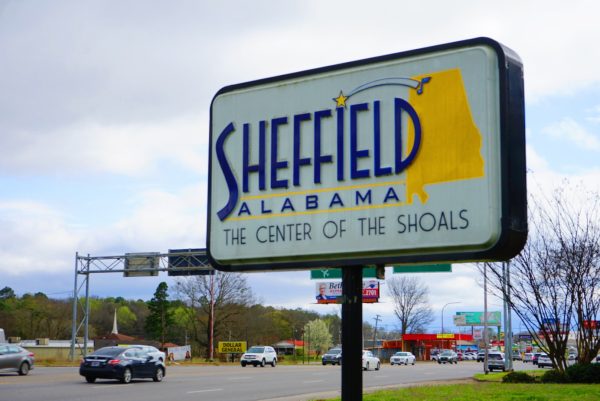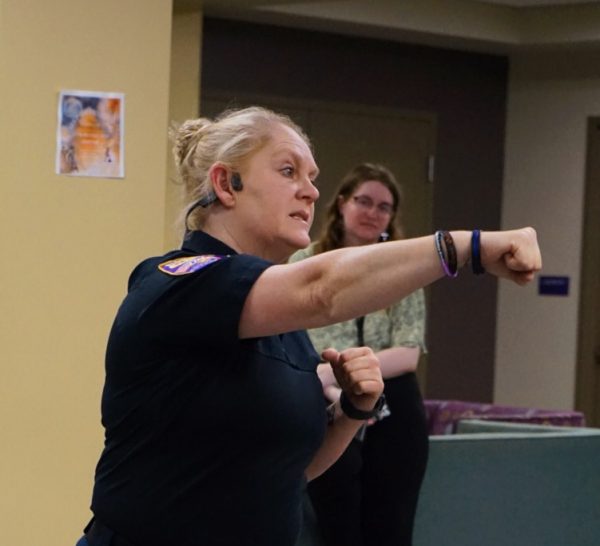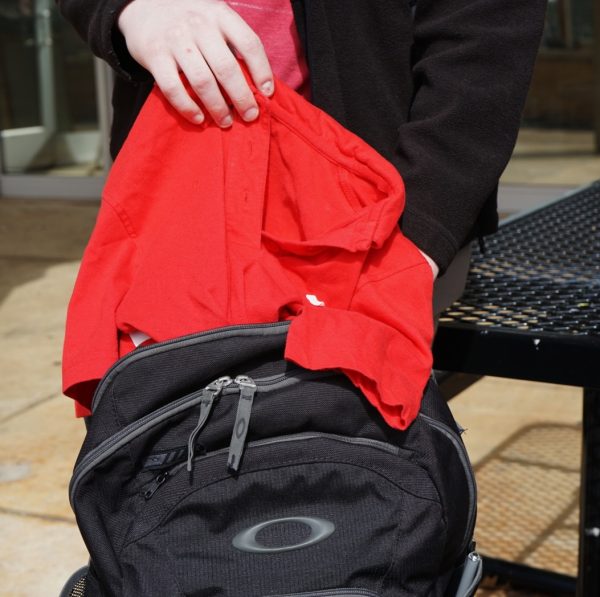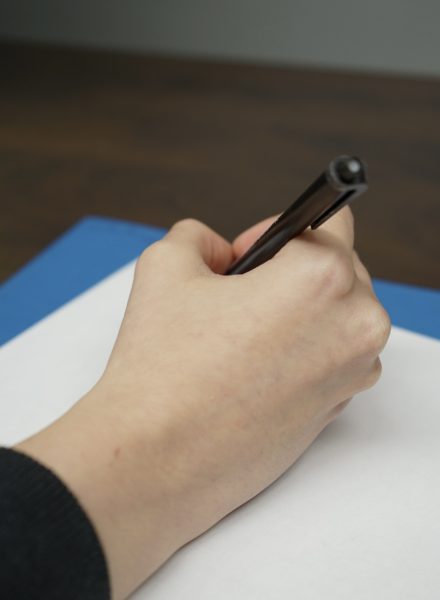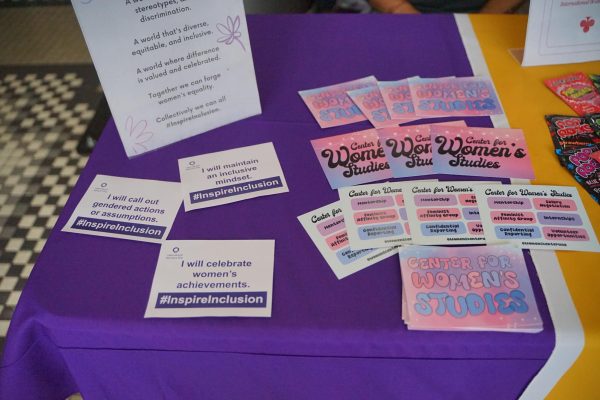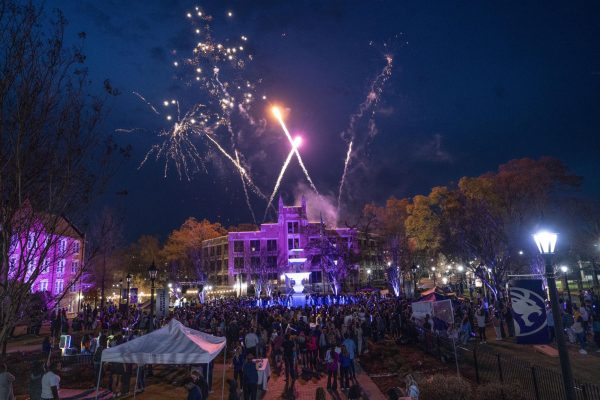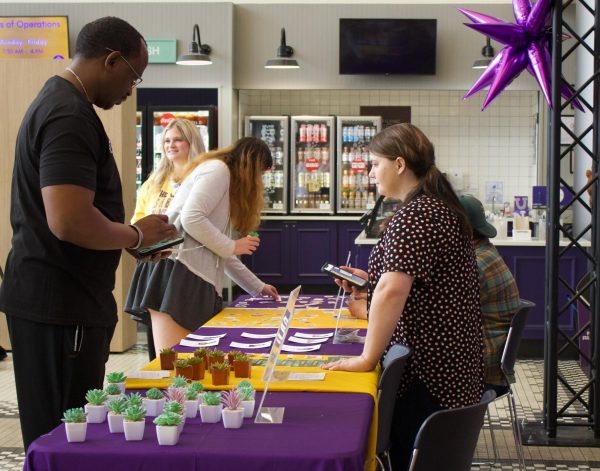UNA science lab procedures allow for safe observation
February 20, 2014
From insects to human body parts to chemicals, Floyd Hall’s science labs are equipped with plenty of specimens for students to safely study and observe.
The possibility of students getting injured during labs is very rare, said Donald Roush, professor of biology.
“When we used to use open flames, occasionally we’d get somebody that might try to set their hair on fire, but we don’t use open flames anymore so we don’t have that problem,” Roush said. “We do have (students who accidentally) touch a hot plate or something, and they can get a burn — but we’ve not even had a significant number of those incidents to speak of because we do emphasize safety whenever the hot plates are out.”
Although more dangerous chemicals used to be kept on campus, it is no longer the case, Roush said.
“We do not store a lot of dangerous chemicals for any length of time,” Roush said. “There were faculty that were here many years ago that had chemicals, pesticides and herbicides that they were studying in large containers, and nobody was using them. We paid to have a company come in and collect all of it and recycle it.”
Supplying labs with materials is costly, said Paul Kittle, department chair of biology.
“The department of biology spends about $100,000 for lab materials each academic year,” Kittle said. “These funds are derived from the course fees that students pay when they enroll in our laboratories.”
Science majors genererally build up a tolerance for anything unfavorable, said Paige Hauck, a senior.
“Some of the things we’ve worked with are sharks, fetal pigs and rats,” Hauck said. “I used to be grossed out by a lot of our (experiment subjects). Now, I’ll pick them up with my bare hands.”
In general, the labs are some of the most fun parts of science classes, Hauck said.
“I’m mostly in (biology) labs,” Hauck said. “We deal with DNA a lot, and I love doing DNA polymerase testing. We run DNA gels so we get to see how many proteins they have in common with one another.”
The professors teaching labs do a great job in educating students, said sophomore Ben Wilson.
“I enjoy the instructors actually having a passion for what they’re doing,” Wilson said. “They try their best to convey everything we’re supposed to be learning in the labs and how it applies to science in general. They also explain what could happen in each lab and the best ways to avoid problems.”
As far as lab accidents, Wilson has only had one.
“I cut myself on a test tube that was down in a drain,” Wilson said. “It was my fault for sticking my hand in the drain. The problem was fixed quickly by the professors.”
While the labs that accompany science classes at UNA can include chemicals, organisms and tools that can be unsafe, the science departments use procedures to promote the safety of everyone involved in the lab classes.
Lab instructors provide resources appropriate for each lab, said Tina Hubler, associate professor of biology.
“We have gloves that can be worn, and they are only needed in certain conditions if there’s something you could possibly ingest that could be harmful,” Hubler said. “We also have safety showers in some of the labs that provide water in case someone is too close to a flame or gets a caustic substance on their skin.”
Students who are conducting research with professors work in special research labs that are also located in Floyd Science Building, said Lisa Blankinship, assistant professor of biology.
“One of my research students is actually doing a project where she looks at spit samples collected from people that have bronchitis or pneumonia, and she was very fortunate enough to get several organisms from hospital patients,” Blankinship said. “Those we take extra precautions with. For example, she’s usually working in coat and gloves, and even sometimes a face mask until we’re sure of what we have.”
The chemicals used in the research labs can be dangerous if not handled properly, Blankinship said.
“For my research lab, we use something called ethidium bromide, which is a DNA stain,” Blankinship said. “We have to be very careful when using it because it can bind to our DNA if we don’t handle it properly and then give us cancer.”
In regard to the new science building, there will be more room for students and faculty to work in labs, causing a safer environment, Blankinship said.


